Did you know that 67% of B2B customers kickstart their purchase journey online? In today’s digital age, this statistic shows the immense importance of understanding the buyer’s journey in the world of B2B sales.
Have you ever wondered the reasons behind a customer’s choice of a particular product or service? What thought processes are behind their final decision to make a purchase? The answers to these questions lie within the customer’s journey stages, a path that unfolds in three distinct stages: awareness, consideration, and decision.
Understanding the buyer’s journey can unravel these mysteries and provide valuable insights into consumer behavior. Throughout this post, we will delve into each of these stages, offering simple explanations and real-world examples to make it easy for you to grasp.
So, let’s embark on this enlightening journey together.
Table of Contents
- What Is the Buyer’s Journey?
- How Is The B2B Customer Journey Different From The B2C Journey?
- Buyer’s Journey Vs. Customer’s Journey
- Why Is The Buyer’s Journey Important?
- What are the three stages of the buyer’s journey?
- Examples of a buyer’s journey
- Tips For Applying The Buyer’s Journey To The Sales Cycle
- Navigate the Buyer’s Journey: Your Path to Sales Success
- FAQs
What Is the Buyer’s Journey?
The buyer’s journey, also known as a purchase journey, outlines the steps a prospect undergoes when purchasing a product or service. It’s an essential concept for salespeople because it helps them understand how prospects think and make decisions. To navigate this journey effectively, you must make content that suits your target audience, also known as your buyer persona.
Imagine the buyer’s journey as a sales funnel. At the top, you have the awareness stage, where people first learn about your product or service. It is where you should grab their attention and introduce them to your brand through resources.
Next comes the consideration stage. Here, potential buyers are thinking about whether your product meets their needs. Your resources should help them compare options and see why yours is the best choice.
Finally, at the bottom of the funnel, there’s the decision stage. It is where people are ready to buy. Here, make it easy for them to take that final step and purchase.
Understanding the buyer’s journey helps you tailor your content to the right people at the right time, ultimately leading to more successful sales.
How Is The B2B Customer Journey Different From The B2C journey?
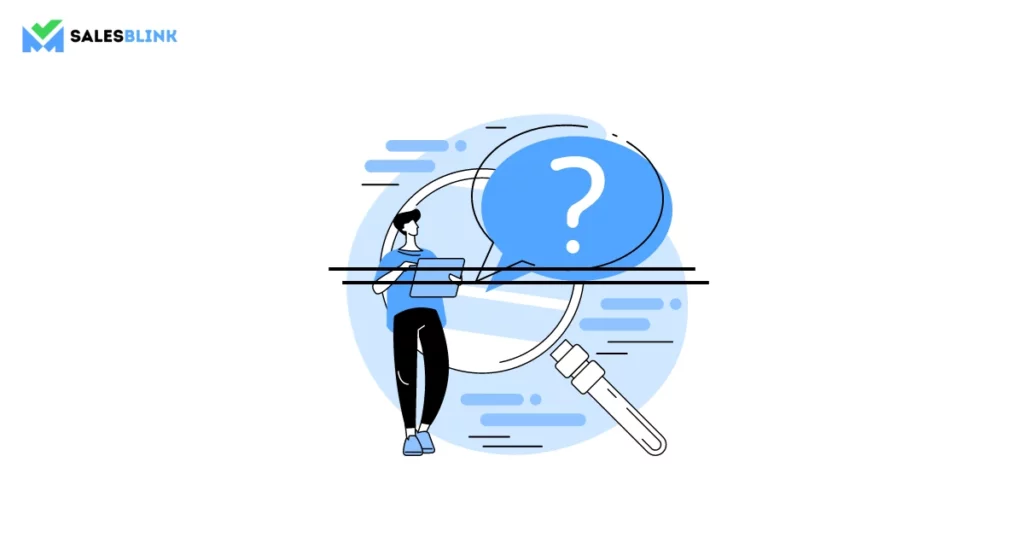
The distinction between the business-to-business (B2B) and business-to-consumer (B2C) buyer journeys lies in potential customers’ motivations and the length of sales processes.
Within the B2C buyer’s journey, customers make purchases for themselves or on behalf of those close to them. Emotions play a central role in driving these buying decisions, making it essential for B2C marketers to connect with and cater to the desires and interests of these consumers. The duration of the sales process in the B2C context can be quite diverse, spanning from a few months to mere moments, depending on when potential customers feel adequately motivated to make a purchase.
In B2B (business-to-business) buying, companies want to get what they need for their organization. They do this because they want to make more money than they spend. So, in B2B you should talk about how the product or service can make the company work better, make more profit, or earn more money.
But here’s the thing: In B2B, it takes a long time to decide. Many people in the company have to talk about it and agree before they buy something. It’s not just one person making the choice. So, it’s a slow process.
Buyer’s Journey Vs. Customer’s Journey
The buyer journey involves acquiring customers, whereas the customer journey focuses on retaining them.
The buyer’s journey revolves around the strategies and actions taken to acquire new customers. It includes the steps and decisions a potential customer makes before they commit to a purchase. During this phase, businesses deliver appropriate content at the right moments to guide prospects along their journey, ultimately converting them into customers.
Conversely, the customer’s journey focuses on what happens after a prospect becomes a customer. Recognizing that the initial purchase is just the beginning of a relationship, businesses prioritize customer retention during this phase. Successful companies aim to cultivate long-term customer loyalty and satisfaction by providing ongoing support and personalized content.
These two concepts, the buyer’s and the customer’s journeys, play pivotal roles in managing the entire customer lifecycle, from acquisition to retention.
Why Is The Buyer’s Journey Important?
The buyer’s journey is a crucial concept in marketing and sales, and it holds immense importance for companies aiming to attract and retain customers. Here’s why it matters:
- Understanding Customer Needs: The buyer’s journey helps get inside the minds of their potential customers. It is essential to create valuable content that addresses these needs by knowing their questions and concerns at each stage.
- Tailored Content Marketing: It guides the creation of relevant and timely content. Whether it’s blog articles, videos, or social media posts, aligning content with the buyer’s journey ensures that it resonates with the audience, increasing engagement and trust.
- Social Media Strategy: Social media is important for reaching customers at various stages of their journey. Understanding where customers are in their buying process helps craft social media posts that resonate with their current mindset.
- Enhancing Customer Experience: A well-mapped buyer’s journey leads to a smoother and more personalized customer experience. When customers feel understood and supported, they are more likely to purchase and remain loyal.
- Inbound Marketing Success: Inbound marketing focuses on attracting prospects through valuable content and relies heavily on the buyer’s journey. The marketing team can attract, convert, and delight customers effectively by offering information that matches the prospect’s current stage.
- Customer Lifecycle Management: The buyer’s journey is part of a larger framework that includes the entire customer journey. By understanding how prospects become customers and eventually advocates, businesses can manage the entire customer lifecycle more strategically.
What Are The Three Stages Of The Buyer’s Journey?
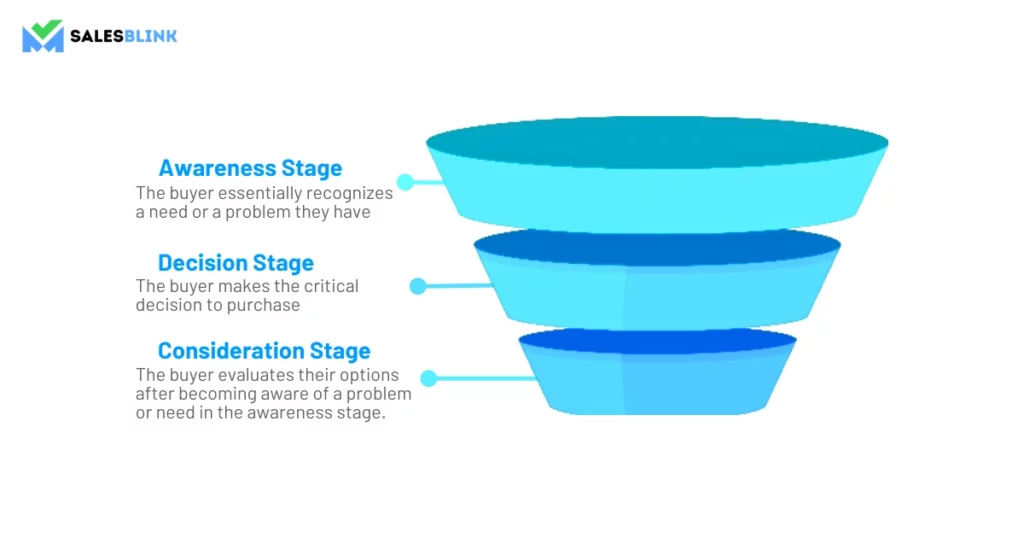
There are three essential stages in a buyer’s journey: the awareness stage, the consideration stage, and the decision stage. These stages represent a potential customer’s journey before making a purchase. Let’s explore each of them in simple terms.
1. Awareness Stage
During the awareness stage, the buyer is essentially recognizing a need or a problem they have. They may be experiencing challenges or seeking answers to questions. It’s the initial spark of interest where they become aware of their pain point.
Buyer’s Activities during the Awareness Stage:
- Identifying a Problem: The buyer begins to recognize a challenge or an unfulfilled need in their life or business. It could be anything from a leaky faucet at home to a need for improved productivity at work.
- Seeking Information: They start looking for information about their problem or need. It often involves searching online, asking friends or colleagues, or reading articles to gain a better understanding.
- Brainstorming Solutions: At this point, the buyer might brainstorm potential solutions or ways to address their issue. They’re yet to be committed to any specific product or service; they’re exploring options.
Further, as per the action item during this awareness stage, there is the need to utilize a content marketing approach. It is about incorporating articles, ebooks, and white papers to provide valuable information to potential customers about their challenges and offer possible solutions.
2. Consideration Stage
During the consideration stage, the buyer is actively evaluating their options after becoming aware of a problem or need in the awareness stage. In this phase, they research and compare different products, services, or solutions to address their specific issue.
In the consideration stage, buyers are typically:
- Researching: They are actively seeking information to understand the available choices. It can involve reading articles, watching videos, or comparing product specifications.
- Comparing: Buyers are weighing the pros and cons of different options. They might create lists, read reviews, or seek recommendations from peers or online communities.
- Narrowing Down Choices: As they gather information, buyers start narrowing down their choices and honing in on what best fits their needs and preferences.
This stage is critical for businesses, as it’s an opportunity to provide valuable content and address the buyer’s specific concerns. By offering helpful information and demonstrating how their product or service stands out, companies can influence the decision-making process in their favor.
3. Decision Stage
During the decision stage, the buyer has gone through the earlier stages of the buyer’s journey: awareness and consideration. In this final stage, the buyer makes the critical decision to purchase. They have likely narrowed their options, conducted thorough research, and evaluated various solutions to their problem or need.
The buyer actively compares the available products or services in the decision stage. They assess pricing, features, reviews, and additional incentives or offers from different providers. It is the stage where the buyer is looking for that extra push or assurance that they are making the right choice.
At this point, there’s the need to focus on delivering compelling value propositions, addressing any remaining concerns or objections, and making the buying process as smooth as possible to encourage the buyer to take the final step and become a customer.
Examples Of A Buyer’s Journey
Here are the examples of a buyer’s journey.
B2B Example
Imagine a software company specializing in customer relationship management (CRM) software. Here’s how the buyer’s journey might look for a B2B scenario:
1. Awareness Stage: A business executive at a medium-sized company becomes aware of the need to improve customer management. They start researching online for solutions to streamline their processes.
2. Consideration Stage: In this stage, the executive identifies CRM software as a potential solution. They compare various CRM providers, read reviews, and consult with colleagues in similar roles to gather insights.
3. Decision Stage: The executive narrows the options to two CRM software providers, Company A and Company B. During this stage, they request demos, talk to sales representatives, and negotiate pricing. Finally, they decided to go with Company A due to its user-friendly interface and impressive analytical features.
B2C Example
Now, let’s consider a B2C scenario involving a consumer looking to purchase a new smartphone:
1. Awareness Stage: A consumer’s smartphone is slow and outdated. They begin researching online about the latest smartphone models and their features. They also seek recommendations from friends and family on social media.
2. Consideration Stage: The consumer shortlists three smartphone brands based on their research: Brand X, Brand Y, and Brand Z. They read reviews, watch YouTube videos comparing the models, and visit local electronics stores to test them physically.
3. Decision Stage: After careful consideration, the consumer purchases Brand X’s latest smartphone. They find an attractive deal online, which includes a trade-in option for their old phone. The decision is influenced by Brand X’s reputation for camera quality and the trade-in offer.
Tips For Applying The Buyer’s Journey To The Sales Cycle
Applying the buyer’s journey to the sales cycle can help you, as a sales rep, sell more effectively. Here are four simple tips:
1. Create & Evaluate Buyer Personas
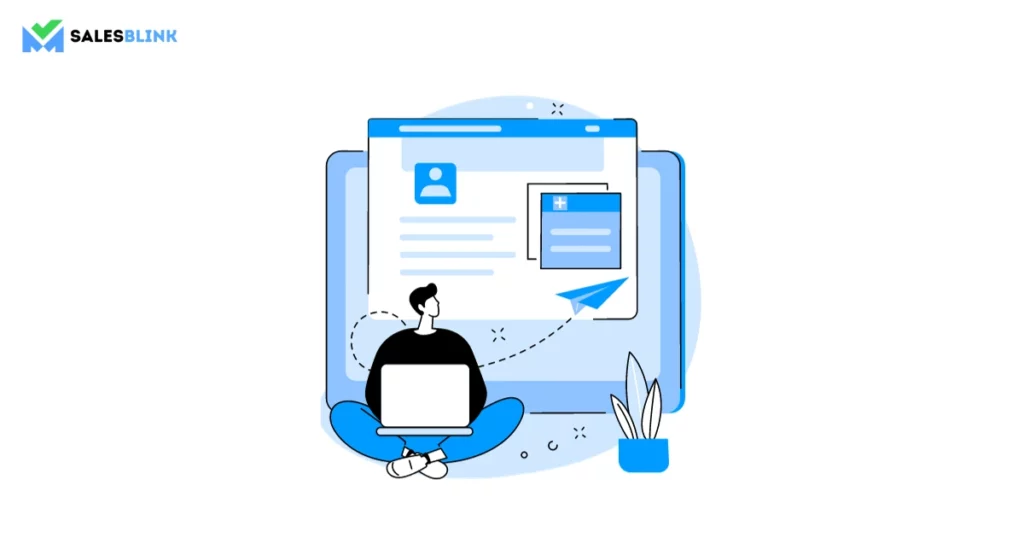
- What it means: A buyer persona is like a character sketch of your ideal customer. It includes details like age, job, and interests.
- How it helps: When you know your customers better, you can create products and messages they love.
- How to do it: Talk to your customers, ask them questions, and take notes. Then, use this information to create your buyer persona.
2. Use Data to Understand Effective Content
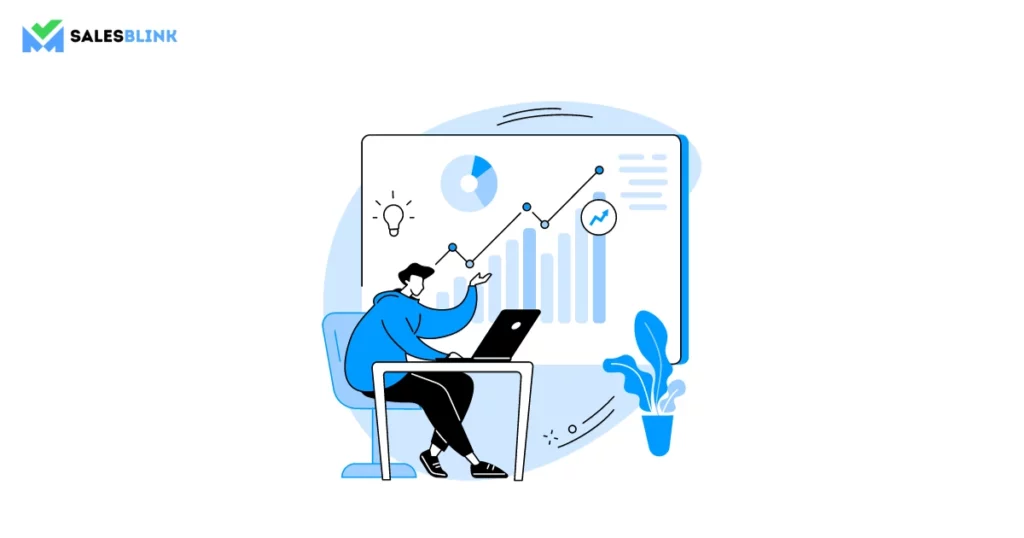
- What it means: Data helps you know what works and what doesn’t. In this case, it’s about determining which content (like emails or ads) makes people buy.
- How it helps: When you know what works, you can do more of it and waste less time on things that don’t.
- How to do it: Look at the data from the marketing efforts. See which emails get opened the most or which ads get clicked on. Use this information to make your content better.
3. Create a Buyer’s Journey Map
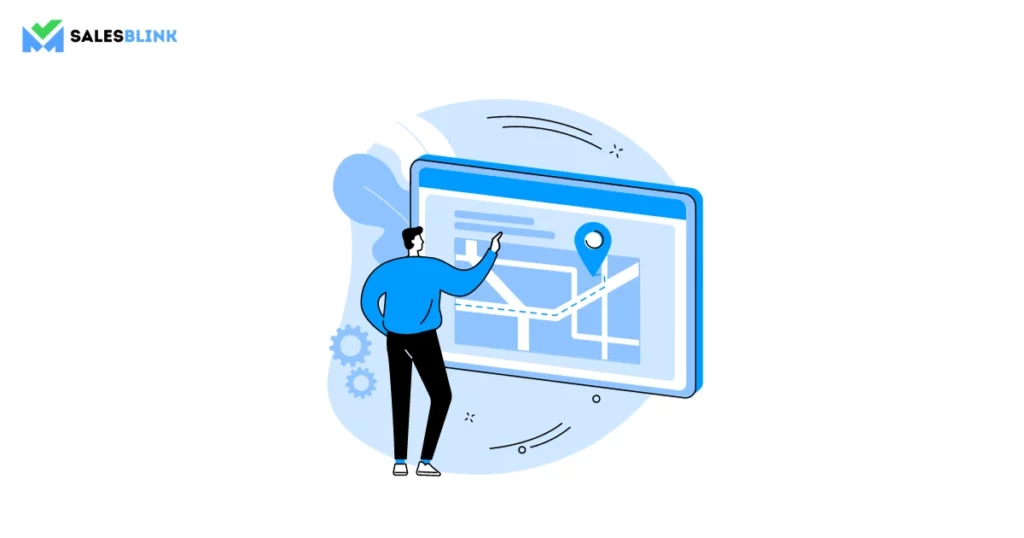
- What it means: A buyer’s journey map is like a roadmap. It shows a person’s steps from first hearing about your product to buying it.
- How it helps: When you have a map, you know where you are and where to go. It helps you plan your marketing better.
- How to do it: List all the steps a customer takes in their journey. Start from when they first hear about you and go all the way to when they make a purchase. Then, plan how to help them at each step.
4. Align Goals Across Sales & Marketing Departments
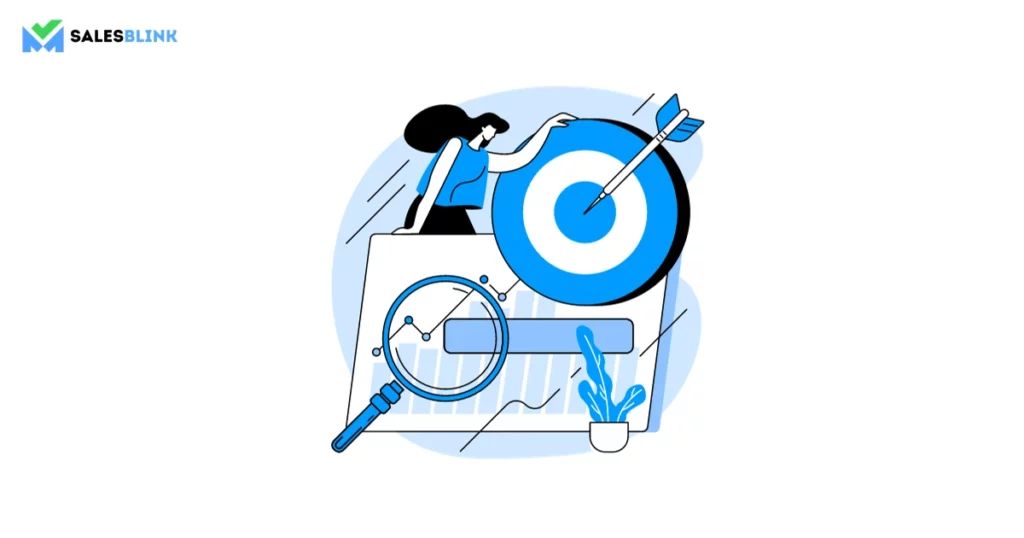
- What it means: Sales and marketing are like two teams working together. They need to have the same goals and work towards them together.
- How it helps: Getting customers is easier when everyone is on the same page. There’s no confusion, and everyone is working towards the same target.
- How to do it: Sales and marketing teams should have regular meetings. Ensure they both understand the goals and use the same information and plans.
Thus, applying the buyer’s journey to the sales cycle is about understanding your customers, using data to make better decisions, mapping out their journey, and ensuring sales and marketing teams work together. Following these tips will make you better equipped to guide your customers from the first hello to a successful purchase.
Navigate the Buyer’s Journey: Your Path to Sales Success
Understanding the buyer’s journey will give you valuable insights into how customers make purchasing decisions in B2B and B2C settings. It’s important to recognize that the buyer’s journey isn’t just a theoretical concept—it’s a powerful tool that can boost your sales.
By applying the tips discussed in this journey and truly understanding your customers at every stage of their buying process, you can nurture your leads effectively, and ultimately guide them to become satisfied customers.
So, don’t just know the buyer’s journey; fully embrace it. When you do, you’ll likely witness your sales skyrocket. It’s all about aligning your strategies with your customers’ needs and preferences, ultimately leading to success in the ever-evolving world of sales and marketing.
FAQs
In the Awareness Stage, buyers benefit from resources that help them understand their problem. Moving into the Consideration Stage, content should help buyers understand why they need to address their problem immediately. Finally, in the Purchase Stage, buyers are looking at different vendor options, and businesses should communicate why their offering is the best.
In the initial stages, buyers become aware of a need. Businesses should understand the needs and context of their buyers to effectively approach them. The tone, voice, imagery, educational content, and level of engagement are important. Content that helps diagnose and solve a problem is crucial in this stage.
In the Consideration Stage, prospects have a good understanding of what they need and start evaluating the details & choices. Businesses should help buyers prioritize criteria, provide hands-on experience or live interaction, & have clear CTAs for the next steps. This stage is about helping the buyer make the best decision.

Leave a Reply